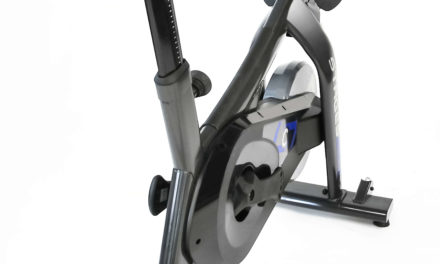
Calculating 10,000 Steps In Cycling

For people who are crazy about step counting and want to convert all there activity to steps for fame and glory, converting cycling miles and time is a bit annoying. Step watches and step counters don’t calculate properly while riding a bike. They are built and designed for foot travel (walking/running) and are not designed for cycling or calculating steps while riding. The goal for most avid steppers is to achieve 10,000 steps or more in a day. This by some is considered optimal for a healthy lifestyle.
Why 10,000 steps instead of 8,000 or 15,000?
As it turns out the 10,000 step value came from Dr. Yoshiro Hatano and his 10,000 step pedometer.
History Of 10,000 Steps
The 10,000 Steps History dates back to Japan in 1960s. A Japanese research team lead by Dr. Yoshiro Hatano determined that the average Japanese person took between 3,500 to 5000 steps per day. The team concluded that if people increased their daily step count to 10,000, they would become healthier and as a result thinner.

The problem of course was the technology had to catch up to science. As years passed, affordable technology became available in the form of pedometers. In 1965 Yamasa Tokei, invented what is now known as the 10,000 step pedometer. Dr. Hatano began selling a 10,000 step pedometer known as “manpo-kei” (10,000 steps meter). The Manpo-kei became widely accepted in Japan for it’s simplicity and motivational factors.
Manpo-kei is written 万歩計.
万: man – 10,000
歩: po – step
計: kei – measure
Today there is a wide range of gadgets from simple pedometers to full blown wrist watch computers calculating all day activity.
Organizations such as the World Health Organization (WHO), US Center for Disease Control (CDC), US Surgeon General, American Heart Foundation, US Department of Health & Human Services all recommend daily activity of 10,000 steps.
It’s not clear if 10,000 steps is sufficient for everyone, but it’s a great starting point or goal to achieve. 10,000 steps equates to approximately 300 to 400 kcal per day (depending on speed and body size). Now of course over achievers are going to blow by the 10,000 mark and set goals of 15,000 or more.
10,000 STEPS AND CYCLING
While on vacation Kathleen and I were hitting at or near 20,000 steps. This was achieved by working out twice daily and also walking to the beach. Obviously we aren’t your average step counters, we tend to get a little competitive. Still we had a blast and got great workouts in. At the time we were doing all our steps without the use of a bike and then we got to thinking is it possible to convert our cycling workouts into steps. The answer is a big YES, but it does take a bit of arithmetic.
Calculating 10,000 steps and cycling, is it even possible?
With all the step counter gadgets available these days it has become very easy to calculate steps based on running and walking, but calculating steps based on cycling is still a manual process.
For some individuals, they only think in Step Speak, not time or distance. It’s all about steps and how many you can get in every day.
To convert cycling or other exercises into steps a good rule of thumb is to use a conversion factor.
- 1 min Low intensity (gentle) = 85 steps
Talk Test: Low intensity – At a low intensity you can carry on a normal conversation without breathing difficulty. - 1 min Moderate/Brisk intensity (comfortable) = 150 steps
Talk Test: Moderate Intensity – You’re now warmed up and you’re beginning to have a little breathing issues, but nothing too strenuous. - 1 min High Intensity (tolerable intensity but not for a long period of time) = 200 steps
Talk Test: High Intensity – The pace has picked up to the point where you would have a very difficult time talking. - 1 Min All Out (crazy hard intensity) = 265 steps
Talk Test: Yea right – The only talking at this point is in your mind and it’s screaming how painful this is.
SAMPLE RIDE TO CALCULATE STEPS
There used to be a ride here in Austin that left from the ATC (Austin Tri Cyclists) bike shop. The ride would always start at a low intensity for 5 minutes and then picked up to moderate pace for 15 minutes and then high intensity for 40 with occasional all out bursts that were lung busters.
Based on this ride I would calculate the steps something like this
85 steps x 5 minutes
150 steps x 15 minutes
200 steps x 40 minutes
265 steps x 4 minutes
So this ride would roughly be equivalent to 11,735 steps.
There you have it. You might have to remember your activity level during the ride and do some mathematics, but it is pretty basic.
If you ride at a moderate intensity for a little over an hour, you will hit your 10,000 steps. Up your intensity and you can cut the ride time by probably 10 or more minutes.























Why do you have to include images of curvy women and their buttocks? I think I know why but do you?
I was testing out what would happen if I added some clickbait images and it has seemed to work for this article. The article is ranked number 1, so I don’t feel the need to change the images at this point.
Blunt 😂 I do agree with Ms Tom but as a female, I read on as I wanted to know about the article. If not for its no 1 ranking, I may not have seen this free content – so thank you for your time. Of the clicks most will be sofa junkies, more fool them. Thank you to the competitive lady mudders – hope they publish their own muddy calendars & monetize. I’d buy that even without buttocks lol
Thank you for writing about this, I prefer one-two hours bikeride to walking, but can it really be this simple..? I have scoliosis so I’ve delevoped a certain muscle inbalance with thunder thighs, and a pretty strong core, therefore I find it pretty easy to go around on a bike since it put the already strong muscles to work, but walking longer distances is harder for me with my muscle imbalances and orthopedic problems…so it kind of feels like bikeriding for peppar like me wouldnt compensate all these recommended steps,
Nice article! Out of curiosity, where do the conversion factor metrics (intensity to steps) come from? I’m curious if this would apply to activities like skating or rowing too, or just cycling. Thanks!